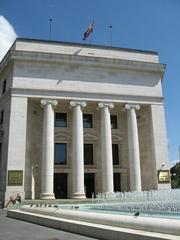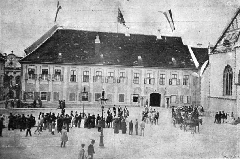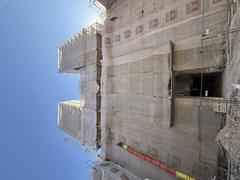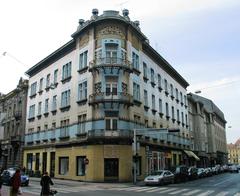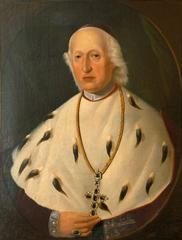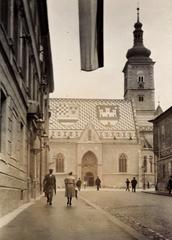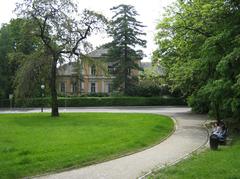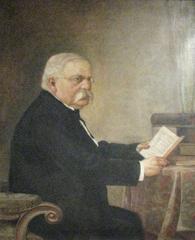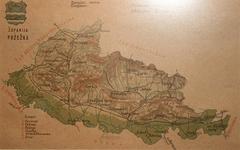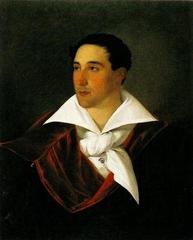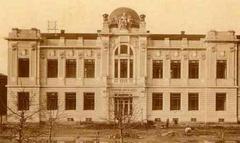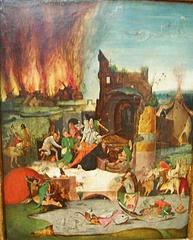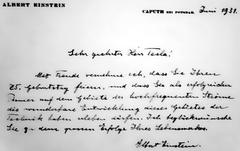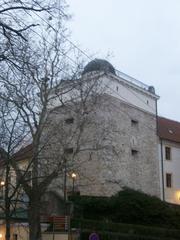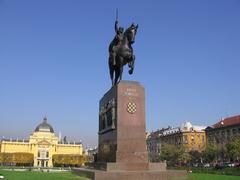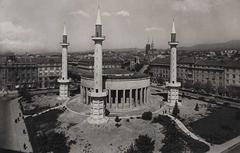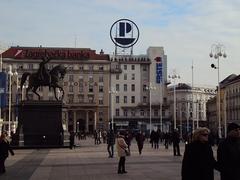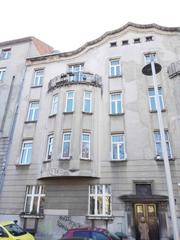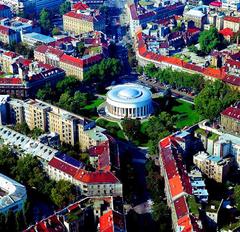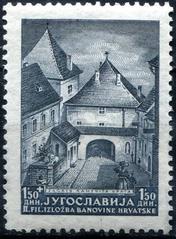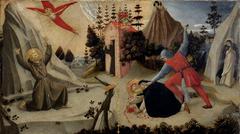Comprehensive Guide to Visiting Manduševac, Zagreb, Croatia
Date: 23/07/2024
Introduction
Manduševac, a historic fountain located in the heart of Zagreb, Croatia, is a fascinating blend of history, culture, and architectural beauty. Nestled in the bustling Ban Jelačić Square, this iconic landmark has been a focal point for the city’s inhabitants and visitors for centuries. The name ‘Manduševac’ is derived from the old Croatian word ‘manduš,’ meaning ‘to fill with water,’ reflecting its original purpose as a vital water source. According to legend, the fountain was named after a girl named Manda who helped a thirsty knight by fetching water from the fountain. This lore adds a layer of mystique and charm to the fountain, making it a significant cultural symbol for Zagreb.
Today, Manduševac stands as a popular meeting point and a picturesque spot for photography, especially during festivals and public events. Its central location in Ban Jelačić Square makes it easily accessible, and its timeless appeal offers visitors a unique opportunity to connect with Zagreb’s past and present. Whether you are a history enthusiast, a photography buff, or simply looking for a beautiful spot to relax, Manduševac is an essential part of any travel itinerary in Zagreb.
Table of Contents
- Introduction
- History of Manduševac
- Cultural Significance
- Architectural and Artistic Value
- Modern-Day Relevance
- Visitor Information
- Nearby Attractions
- FAQ
- Conclusion
- References
History of Manduševac
Origins and Early History
Manduševac has roots that trace back to medieval times. Situated in Ban Jelačić Square, the fountain served as a vital water source for the local population. The name ‘Manduševac’ is derived from the old Croatian word ‘manduš,’ meaning ‘to fill with water.’ According to legend, it was named after a girl named Manda who fetched water for a thirsty knight, thus becoming a part of local folklore.
Historical Background
The fountain has witnessed numerous transformations and restorations over the centuries. Its historical significance extends beyond its function as a water source, serving as a symbol of the city’s rich heritage and continuity of traditions. In 1986, during the reconstruction of Ban Jelačić Square, the fountain was restored to its original location and design, ensuring it remains a symbol of Zagreb’s historical and cultural identity.
Cultural Significance
Manduševac is more than a historical artifact; it is a cultural symbol of Zagreb. It represents the city’s rich heritage and continuity of its traditions. The fountain is associated with various local legends and folklore, making it a subject of interest for both locals and tourists. One popular legend is that of the ‘Zagreb Witch,’ who cursed the fountain, causing it to dry up. The curse was eventually lifted, and the fountain began to flow again, symbolizing the triumph of good over evil, adding a mystical aura to the fountain.
Architectural and Artistic Value
The architectural design of Manduševac is simple yet elegant, reflecting the aesthetic sensibilities of its time. Made of stone, the fountain features a circular basin with a central spout from which water flows. Over the years, it has undergone several renovations to preserve its structure and functionality, with the most significant restoration occurring in 1986. This renovation was part of a broader effort to preserve Zagreb’s historical and cultural landmarks.
Modern-Day Relevance
Today, Manduševac serves as a popular meeting point and landmark for both locals and tourists. Its central location in Ban Jelačić Square makes it easily accessible and a convenient spot for social gatherings. The fountain is often used as a backdrop for photographs, especially during festivals and public events. It is featured in various city tours and travel guides, highlighting its importance as a must-visit attraction.
Visitor Information
Visiting Hours
Manduševac is accessible to the public 24/7. However, the best time to visit is during the day when the square is bustling with activity.
Ticket Prices
Visiting the Manduševac Fountain is free of charge, making it an excellent spot for travelers on a budget.
Travel Tips
- Best Time to Visit - Morning hours are ideal for a peaceful visit, while evenings offer a vibrant atmosphere with locals and tourists.
- Photography - The fountain is a popular spot for photography, especially during the golden hour.
- Local Culture - Explore the local shops and cafes around Ban Jelačić Square to fully immerse yourself in Croatian culture.
Local Etiquette and Customs
When visiting Manduševac, it is important to respect local customs and traditions. Croatians are generally friendly and hospitable. Greeting people with a simple ‘Dobar dan’ (Good day) or ‘Bok’ (Hi) is considered polite.
Accessibility
Manduševac is wheelchair accessible, and the surrounding Ban Jelačić Square is flat and paved, making it easy to navigate for visitors with mobility issues.
Nearby Attractions
- Zagreb Cathedral - A stunning example of Gothic architecture just a short walk from the fountain.
- Dolac Market - The largest farmer’s market in Zagreb, offering fresh produce and local delicacies.
- Tkalčićeva Street - A lively street filled with bars, restaurants, and shops.
FAQ
What are the opening hours of Manduševac? Manduševac is open 24/7.
Is there an entrance fee for Manduševac? No, there is no entrance fee to visit Manduševac.
Are guided tours available for Manduševac? Yes, guided tours that include Manduševac are available and often cover other historical landmarks in Zagreb.
Conclusion
Manduševac is more than just a fountain; it is a symbol of Zagreb’s rich history and cultural heritage. Its significance extends beyond its historical origins, encompassing local legends, architectural beauty, and modern-day relevance. For visitors to Zagreb, a visit to Manduševac offers a unique opportunity to connect with the city’s past and present, making it an essential part of any travel itinerary.
For more updates and tips, follow us on social media and download our mobile app Audiala to explore more about Zagreb’s attractions.
References
- Discover the Rich History, Visiting Hours, and Ticket Information for Manduševac Fountain in Zagreb, 2024, Audiala
- Visiting Manduševac - History, Culture, and Tips for Your Trip to Zagreb, 2024, Audiala
- Manduševac Fountain - History, Visiting Hours, Tips, and Nearby Attractions in Zagreb, 2024, Audiala
- Official Website of Manduševac Fountain
- Croatian National Tourist Board
